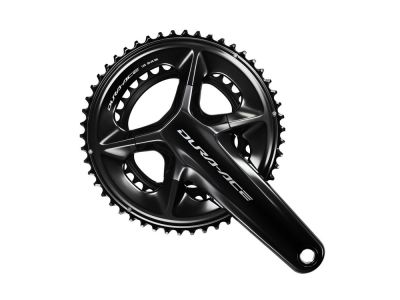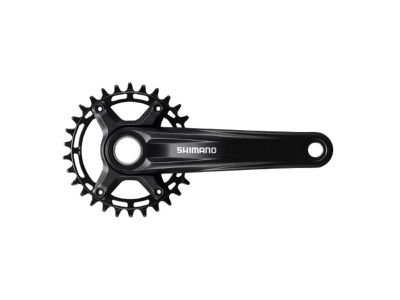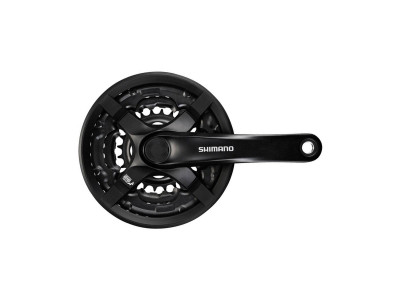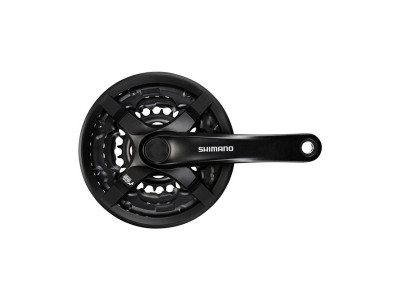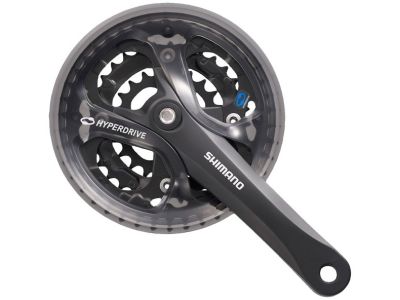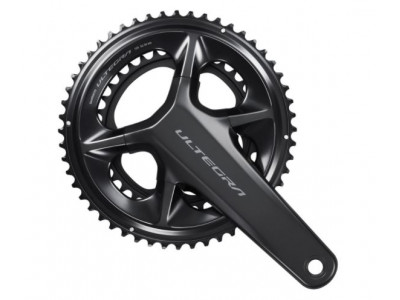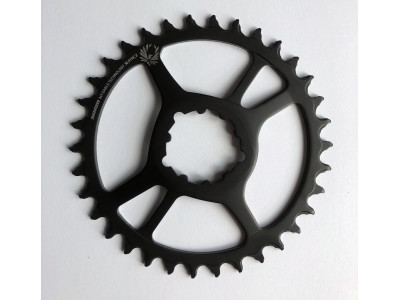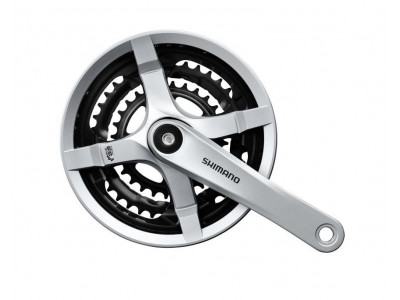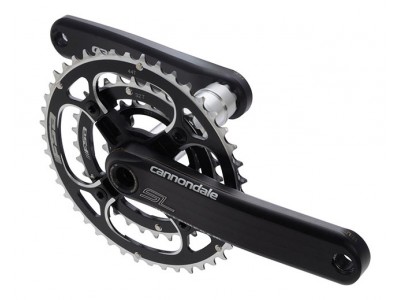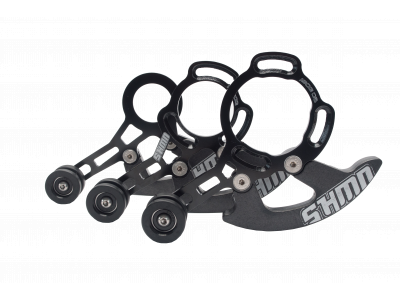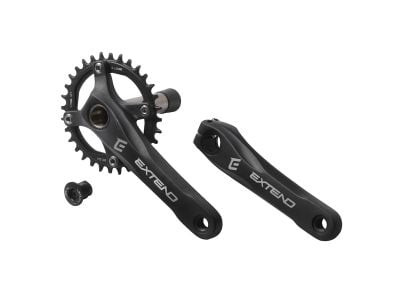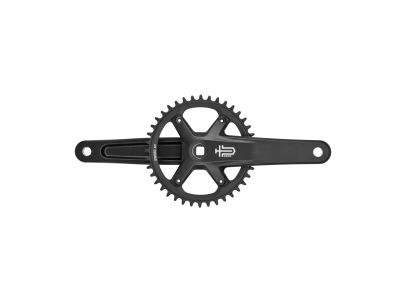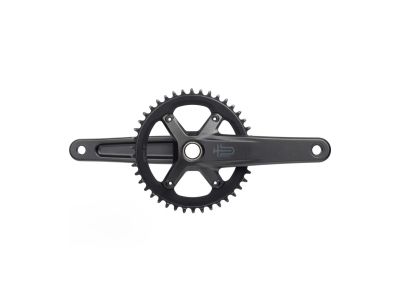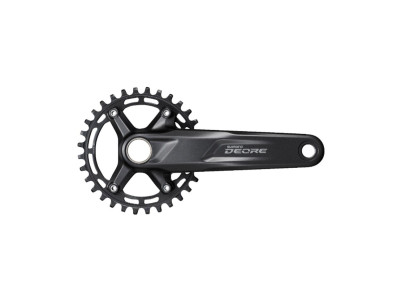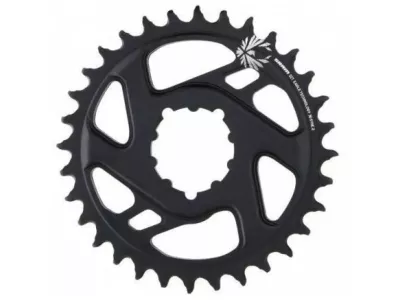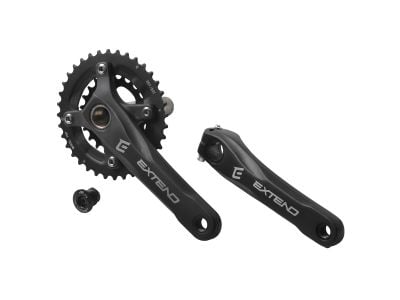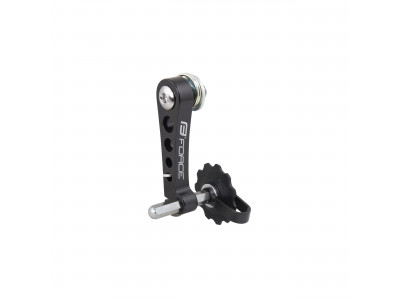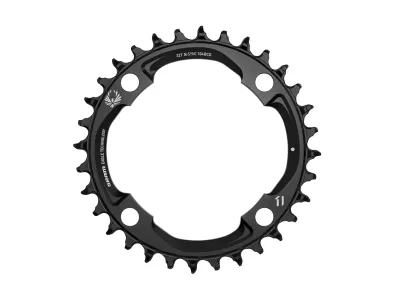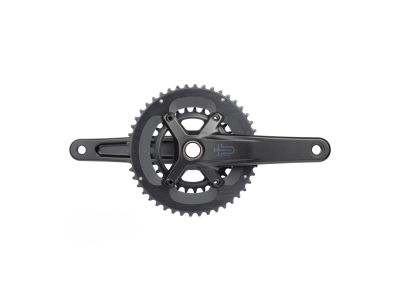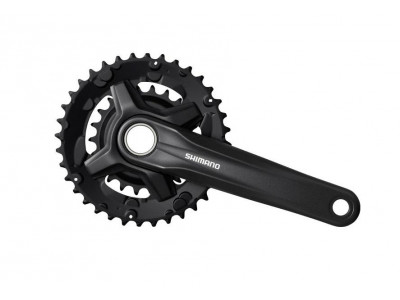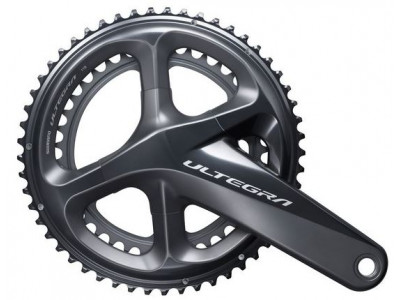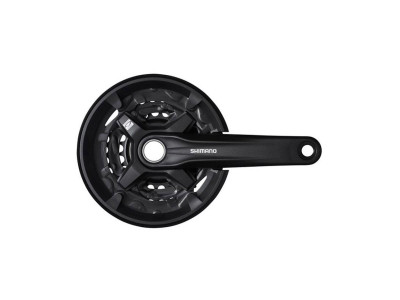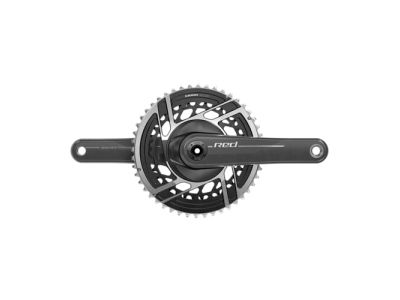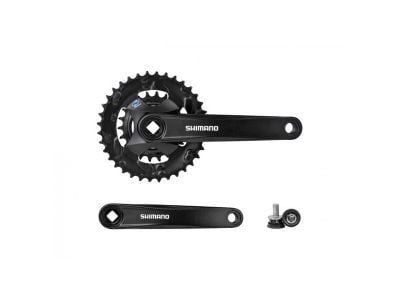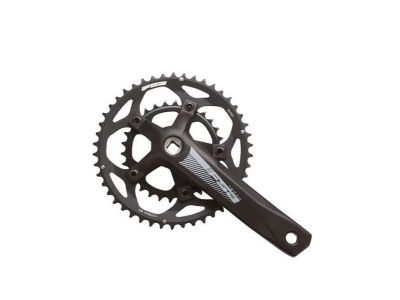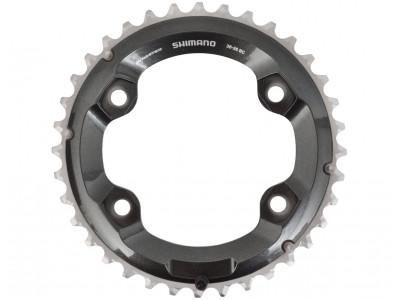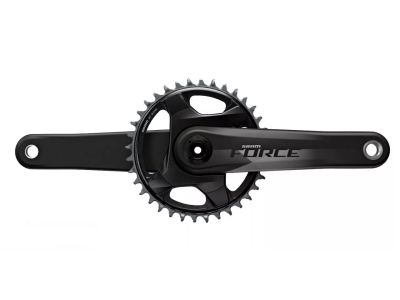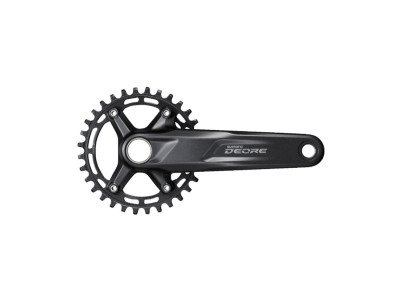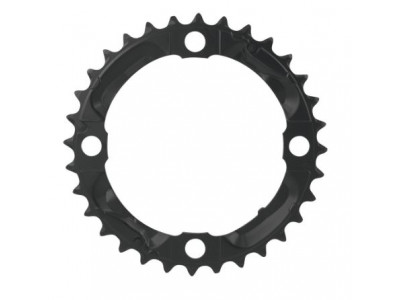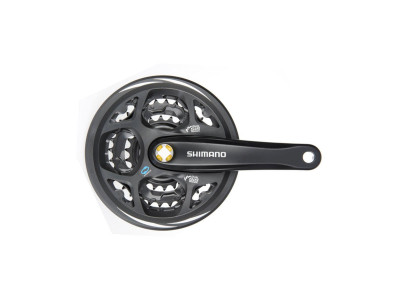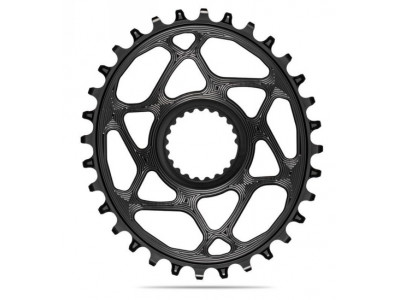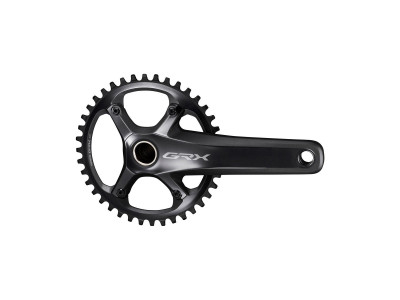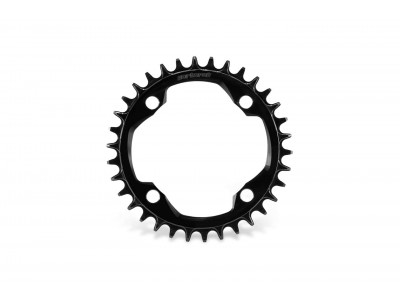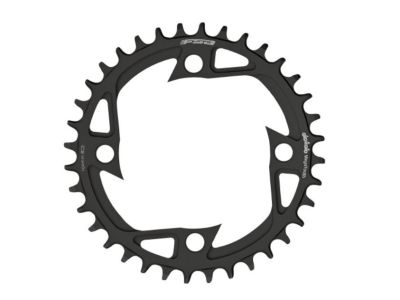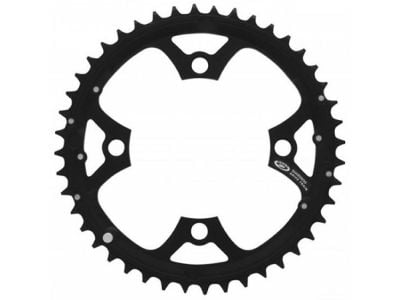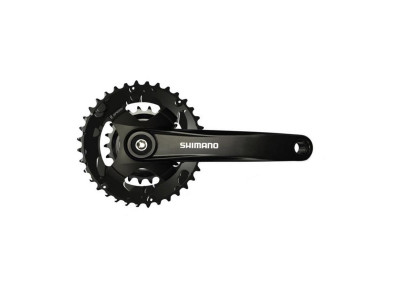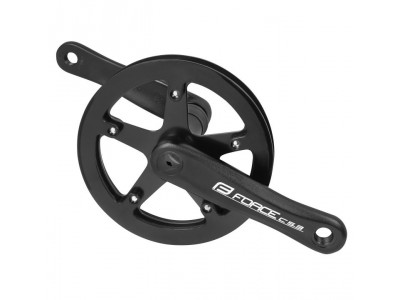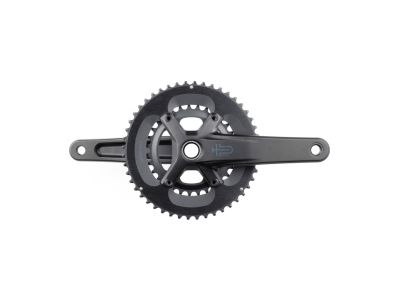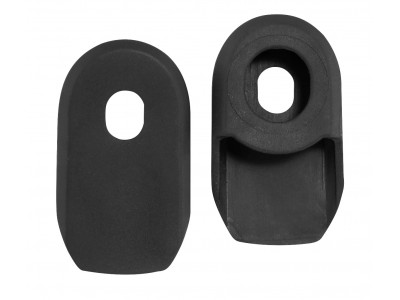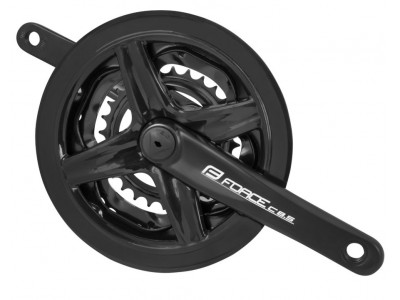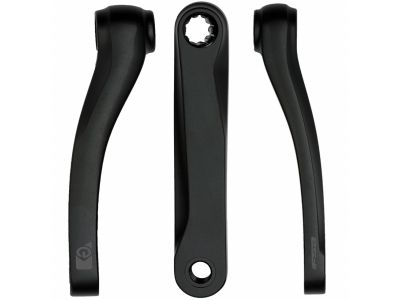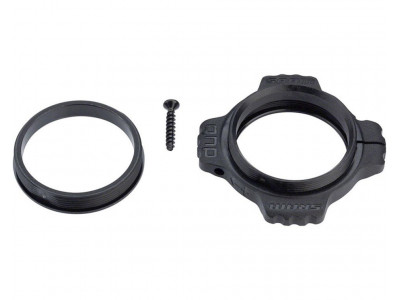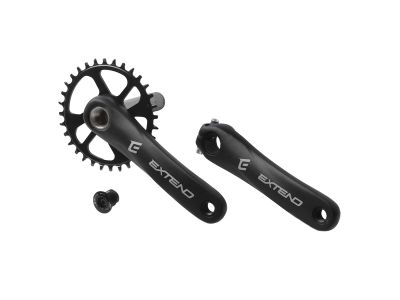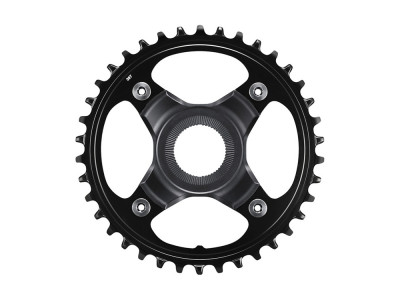When choosing cranks, the size and type of bottom bracket is important. There are variants with 1 to 3 converters to pick from. For a functioning shift, you must also have a correctly selected derailleur and shift lever. The length of the cranks is chosen according to the height of the rider, the exact size will be revealed by the Bikefitting seat measurement. Most often, cranks are made of aluminium, the lightest ones are made of carbon. Individual converters, tensioners, or rock rings can be purchased separately.
Here is a short description of the features that you should consider when purchasing cranks:
- Material:
- Aluminium: Light and durable material, commonly used in middle class cranks.
- Carbon fibre: Offers an excellent balance between very light weight and good stiffness, often found in higher class cranks.
- Steel: Durable but heavy, usually used for basic and cheap cranks.
- Length: Common lengths range from 165 mm to 180 mm. Shorter cranks can provide a faster cadence, while longer cranks can offer more leverage.
- Bottom bracket compatibility: Cranksets must conform to the bottom bracket standard.
- Gears: Cranks can have one, two, or even three gears. The number of teeth of the converter determines the gear ratio. Choose a system that matches your drive and preferences.
- Q-Factor: The Q-Factor is the lateral distance between the pedals, which is given by the deflection of the crank. It affects posture of the rider on the bike. A narrow Q-factor can reduce the load on the knees, but can impact stability.
What bicycle crank standards are there?
Different types of bottom brackets have specific crankset installation requirements. Make sure the crankset is compatible with the specific type of bottom bracket used on your bike. Common types of bottom brackets include: quad shaft, Octalink, ISIS, GXP, DUB and others.
How to choose the right crank length?
Choosing the right crank length is important for optimal comfort, efficiency, and power transfer. Here are some factors to consider when choosing the right crankset length:
- Rider height: Height is a major factor in determining the appropriate crank length. Taller riders tend to use longer cranks, while shorter riders are more comfortable with shorter cranks. Use the following general parameters as a starting point:
- less than 165 cm : 165 mm - 170 mm
- 165 - 175 cm : 170 mm - 172.5 mm
- 175 - 188 cm: 172.5 mm - 175 mm
- 188 cm and taller: 175 mm - 180 mm
- Leg length: Leg length is another significant factor. If you have proportionally longer or shorter legs in relation to your height, it may be necessary to pick the length of the cranks accordingly. Longer legs may benefit from slightly longer cranks, while shorter legs may require shorter cranks.
- Riding style: The choice of crank length can also be influenced by riding style and discipline:
- Road cycling: For road cycling, most riders use 165 to 175 mm cranks. Longer crank arms can provide a slight leverage advantage when climbing while out of the saddle, shorter crank arms can increase pedalling cadence and comfort.
- Mountain biking: Mountain biking typically uses 165 mm to 175 mm cranks. However, many riders prefer shorter cranks (165 mm - 170 mm) to improve ground clearance and manoeuvrability in technical terrain.
- Bike adjustment: If possible, consider having your bike professionally adjusted and customized. A bike fitter can assess individual body measurements, flexibility and riding style and recommend the most suitable crankset length.
How to correctly measure crank length?
- Remove the pedals from the crank.
- Measure the distance from the centre of the bottom bracket axis to the centre of the pedal hole on one of the crank arms.
How to remove cranks from a bicycle?
- Tools: You'll usually need a crank puller, a set of wrenches, and possibly a rubber mallet.
- Remove the pedals: Use a pedal wrench to loosen and remove the pedals from the crank arms. The left pedal has the opposite thread, so loosen it in a clockwise direction when disassembling.
- Remove crank bolts: Depending on the type of crank, it may be necessary to remove the bolt or cap that holds the crank arm to the crankshaft or to the axle in the bottom bracket.
- Use a crank puller: Screw the crank puller into the crank arm thread. Make sure it is tight.
- Remove the crank arm: With the puller in place, turn its handle counterclockwise (using a wrench). This will apply pressure and push the crank arm off the axis of the bottom bracket. You may need to use a rubber mallet to tap lightly to help loosen the cranks.
